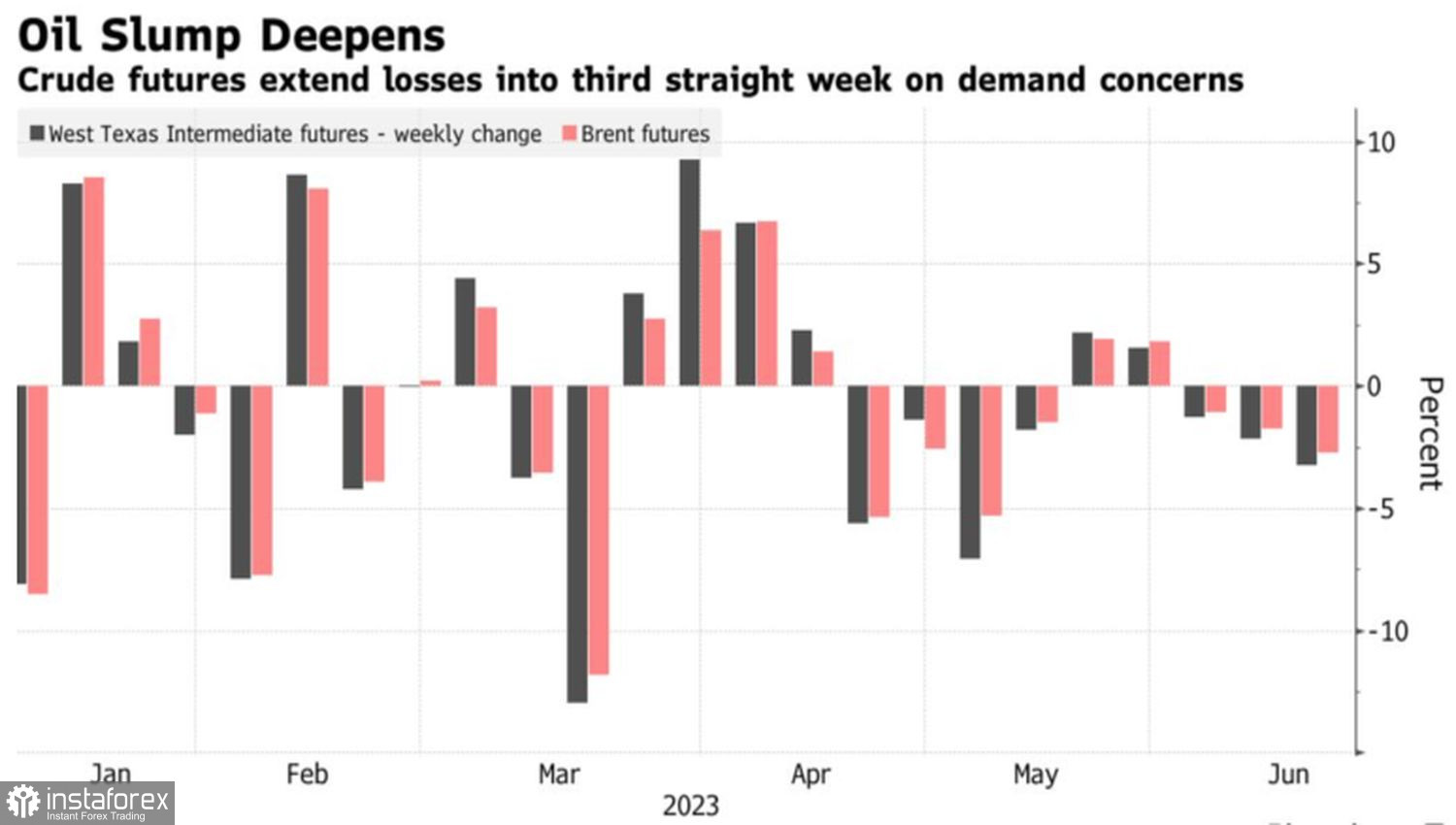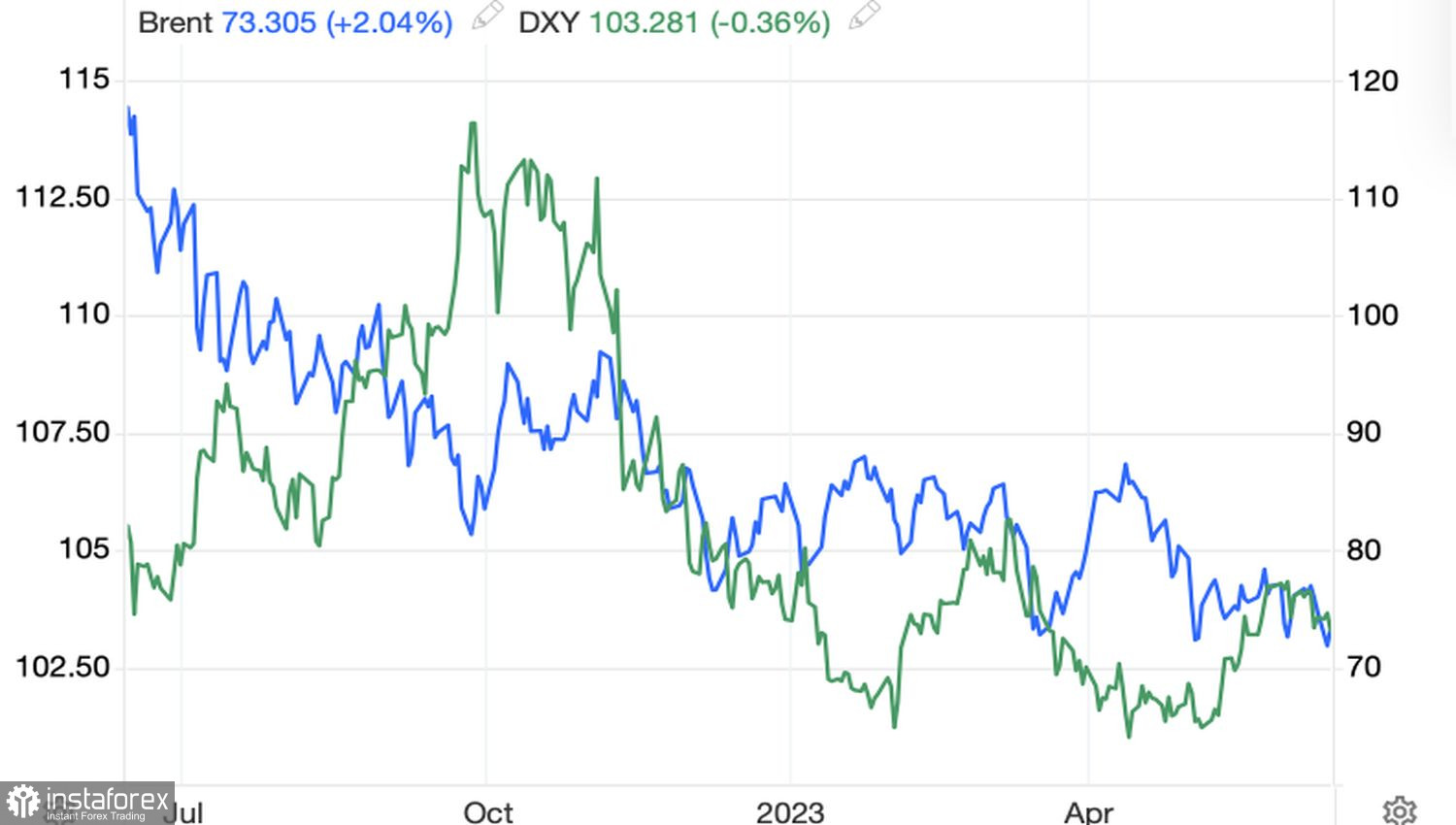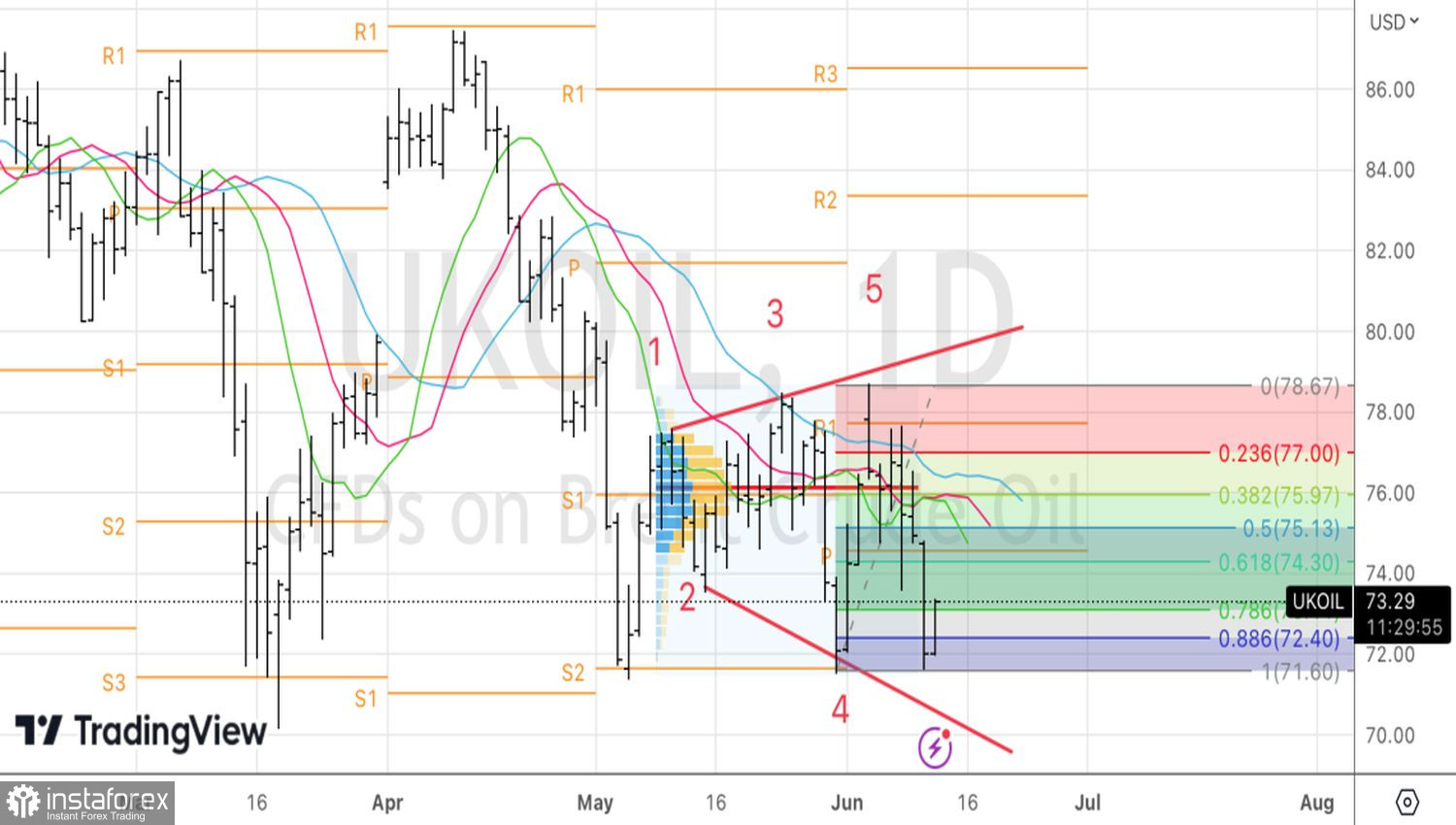When the bulls leave the market, and the forecasts from OPEC and IEA are sure to show a reduction in global demand, no production cuts from Saudi Arabia can provide support for oil prices. The North Sea blend has been bearish for the third consecutive week. The market is currently dominated by the bears.
Goldman Sachs' third forecast downgrading in the last six months triggered a collapse in the Brent price. The bank sees the North Sea blend at $86 per barrel by the end of the year, rather than the previously anticipated $95 per barrel, due to the oversupply of oil in the market. The revision of Goldman Sachs' estimates has seriously spooked oil buyers.
Weekly change

A series of disappointing data from China has caused investors to change their views on the rapid recovery of its economy. The risks that the IEA and OPEC will lower their forecasts for global demand have increased, which is a negative factor for crude. Data confirming a reduction in global inventories would boost futures prices. As long as reports show a completely opposite situation, Brent is unlikely to be able to rise.
The minimum backwardation for the North Sea blend since March, at $1.1, confirms the bearish market. Such a situation shows that investors seriously doubt that demand exceeds supply. The Texas blend, on the other hand, is trading in contango, signaling no concerns about supply shortages. No matter how much Saudi Arabia reduces production, traders carefully monitor backwardation and contango when making decisions. It is not surprising that there are few buyers willing to purchase crude at seemingly attractive prices.
Concerns that the fresh FOMC forecast will feature higher federal funds rates exert pressure on Brent. Financial Times experts believe it will rise to 5.75-6%, implying another 2 or 3 increases. If the Federal Reserve confirms such assessments, the greenback will strengthen. Meanwhile, oil quoted in the US dollar will face additional pressure.
OIL vs DXY change


The decision of the central banks of Australia and Canada to resume tightening has increased concerns about a global economic recession in the oil market. The higher the rates climb, the higher the likelihood of a downturn. In this light, the demand for oil will decline, contributing to a decrease in the price of the North Sea blend.
Technically, on the daily chart, a drop below the 88.6% Fibonacci level from the 4-5 wave of the Expanding Wedge pattern is a cause for concern. If oil fails to consolidate above $73.1 or rebound from resistances at $74.3-74.5 and $75.15, a sell signal will be generated.





















